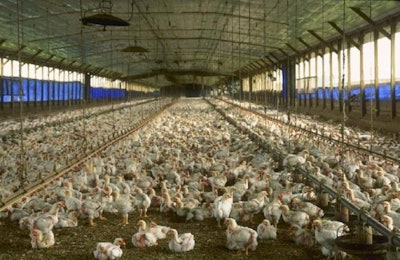
With the anniversary of the December 2014 U.S. highly pathogenic avian influenza (HPAI) outbreak approaching, the U.S. Department of Agriculture’s Animal Plant Health Inspection Service (USDA APHIS) is working towards the release of restrictions on the farms where the final cases of disease ended this summer.
As it prepares to release the final restrictions on a few U.S. farms, USDA is shoring up trade relations in the wake of the HPAI outbreaks. APHIS officials have been visiting crucial trading partners in Asia, Africa and the Middle East. The main topics of discussion are the recognition of zoning in trade restrictions and the potential use of vaccines in disease eradication efforts should there be another HPAI outbreak.
Lisa Ferguson, national director of policy permitting and regulatory services, National Import Export Services, APHIS Veterinary Services, said countries are now beginning to lift trade restrictions on U.S. poultry. “Many partners are releasing restrictions by state or county as they were imposed. That process is going very well,” she told attendees of the National Chicken Council’s annual meeting.
“Overall, the visits were very helpful and we got encouraging messages from these trading partners,” she said. “Previously, many of these countries had indicated that if the U.S. chose to use vaccine as a tool in its eradication efforts, they would impose complete restrictions on the entire U.S. After these discussions, they have appeared to back off from that position.”
Ironically, past outbreaks of low pathogenicity avian influenza have helped the U.S. build trust with trading partners, according to Ferguson.
“Because we were able to work out a lot of issues and build communication and trust with many trading partners based around our low-path AI findings, they had more trust in what we are doing and greater understanding of how we respond in our infrastructure when it came to high-path avian influenza,” she explained.
Ferguson said the U.S. will continue to work through the World Organization for Animal Health (OIE) on the zoning issues and how to more clearly define what constitutes disease outbreaks in commercial poultry.
“APHIS will be trying to come up with a better definition of poultry so that a disease outbreak in a flock of 10 backyard chickens in the Pacific Northwest would not have a trade impact on major broiler companies in Georgia and Arkansas,” she said.
The most important point, she said, is having trading partners accept disease quarantine regions and zones that would allow trade to continue from other parts of the country.


















